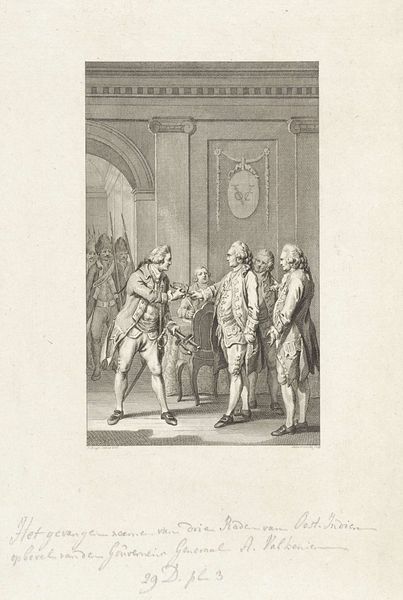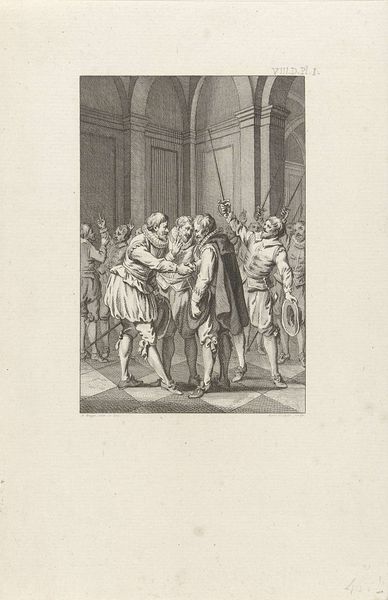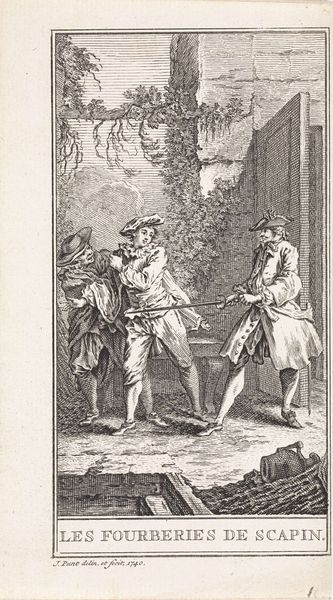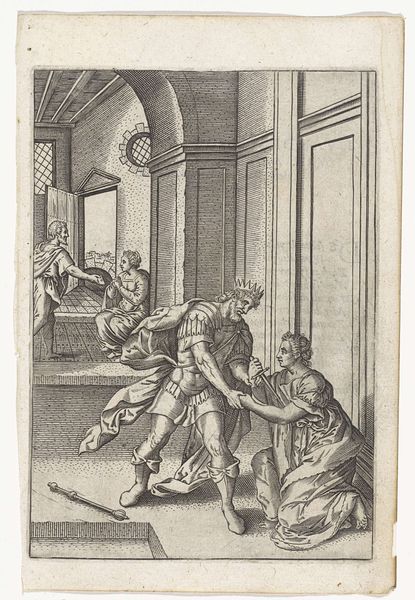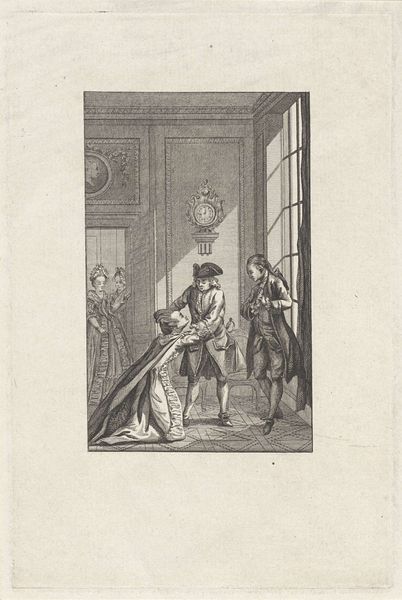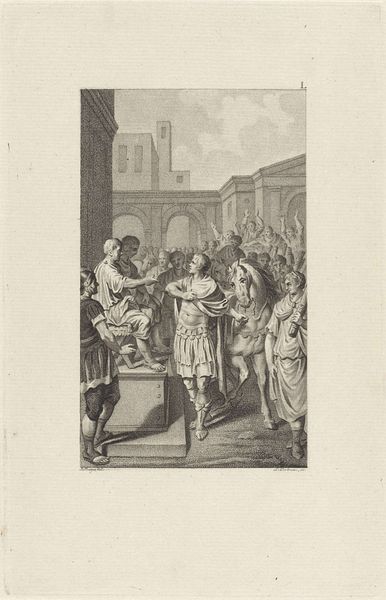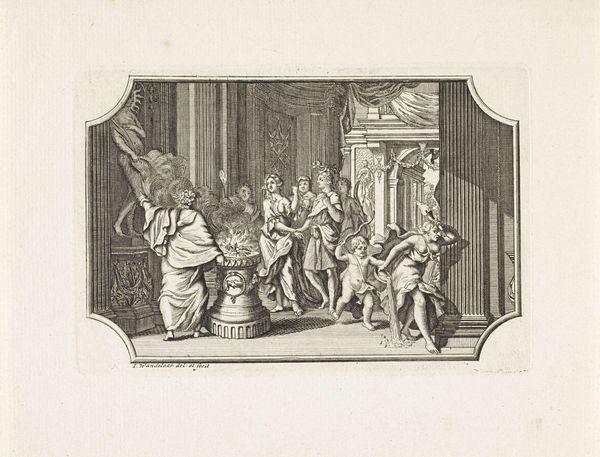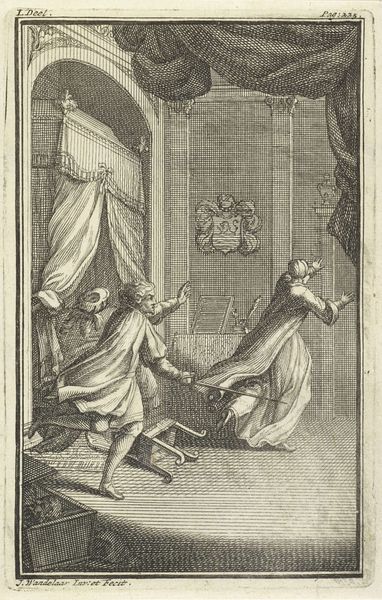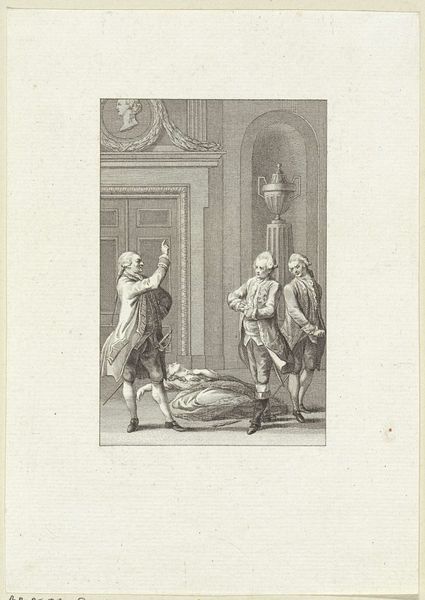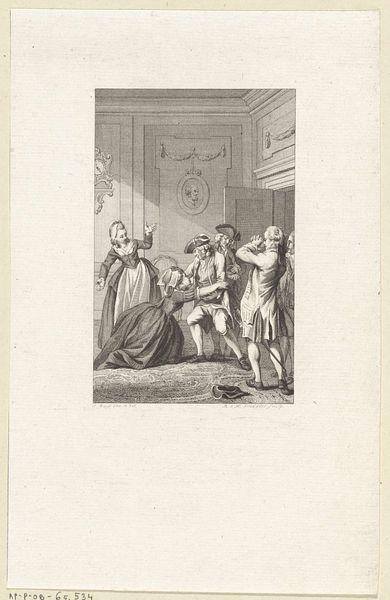
Dimensions: height 151 mm, width 100 mm
Copyright: Rijks Museum: Open Domain
Curator: This engraving, "Moord op Willem van Oranje, 1584", or "The Murder of William of Orange, 1584", was created between 1782 and 1784 by Reinier Vinkeles, and is currently held in the collection of the Rijksmuseum. Editor: What a dramatic scene. The stark contrast and the way the smoke is rendered really draws your eye right to the moment of impact. It has a chillingly decisive feeling. Curator: Absolutely. Consider the material process: engraving demands meticulous, often painstaking labor. Each line etched into the metal plate represents hours of work. This speaks to the commitment to documenting and disseminating such a pivotal historical event. It elevates what might be seen as just another 'print' to something more historically significant, a visual tool influencing the contemporary view of Dutch Golden Age events. Editor: The pistol, a relatively new instrument of power at that time, is so significant here; its presence indicates an end of an era and the violent birth of another. Note also the reactions of the bystanders fleeing the scene—their gestures of terror, their symbolic importance in revealing the broader societal shock. The murder wasn't just the loss of a leader, but a collective trauma depicted through potent symbolism. Curator: And beyond its role as a conveyor of narrative, let’s think of it as a mass-produced object. Multiple copies meant wider distribution, impacting collective memory across various social strata, and making these horrific events readily available. Did such illustrations make political martyrdom a more common aspiration in this age? Editor: Possibly, since Vinkeles made careful compositional choices, the theatrical staging of the scene – almost Baroque in its drama – surely helped transform the image of William into a timeless martyr. It has certainly worked! Curator: Looking closely at the work involved, one cannot help to wonder about Vinkeles' place in the entire narrative: he didn't simply depict it. The making of this image served to create collective consciousness. It's hard to overlook this silent implication of craft in service to ideological production. Editor: That's fascinating. To me, the echoes of earlier iconographies of martyrdom are loud here. This single image contains a whole worldview! Curator: Thank you. It’s intriguing how this close examination opens different paths of reflection. Editor: I agree; each perspective really enriches our appreciation of this print's layered meanings and continued impact.
Comments
No comments
Be the first to comment and join the conversation on the ultimate creative platform.

